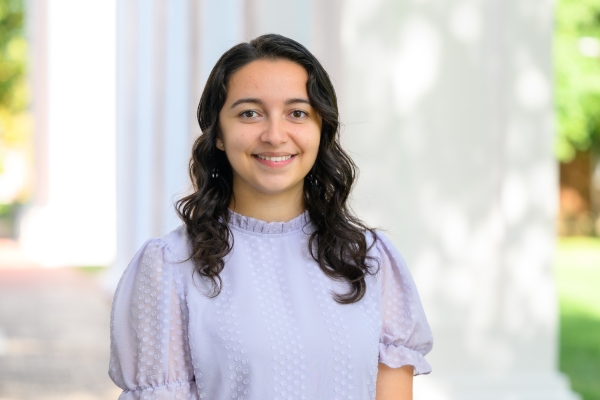The Lenfest Center Presents ‘Native American Peoples and Lands: Historic Connections to W&L’ The public talk will take place in Kamen Gallery on Sept. 27 and is part of the Lenfest Center’s Outreach & Engagement Series.
The Lenfest Center at Washington and Lee University presents “Native American Peoples and Lands: Historic Connections to W&L,” a discussion with current and alumni members of W&L’s Native American student organization, on Sept. 27 at 5:30 p.m. in the Stan Kamen Gallery located in the lobby of the Lenfest Center for the Arts.
The talk is free and open to the public and is part of the Lenfest Center’s Outreach & Engagement (O&E) Series.
Celeste Alvarez ’26 and Jessica Wager, assistant director of institutional history at W&L, will discuss their community-based approach to Native American history research. The event will be an opportunity to introduce attendees to the region’s history or build upon their existing understanding of regional Native American peoples and lands and how W&L is intertwined with them.
Native American peoples in the mid-Atlantic region, particularly in the area now known as Virginia, are inseparable from the history of W&L. These Eastern Siouan and Tutelo-speaking peoples and other migratory tribes lived, hunted, traded and stewarded land in this region for millennia before European contact, and continue to do so today. The cultural practices of these first peoples created the desirable environmental conditions that enticed colonization of this area by early Virginia colonial governors.
W&L’s origins and early leaders are connected to Native American peoples and lands through participation in county militias and colonial battles and wars, as well as serving in government roles as treaty signatories and enforcers, among other capacities. As part of federal treaty provisions in the late 19th and early 20th centuries, federally displaced Native American nations formerly in the southeastern region of North America began enrolling their youth at higher education institutions; at W&L, those students included two former chiefs of the Choctaw Nation. For the Choctaw, the concept of “itapela hosh nana yakomichi” (doing things as a group) was a guiding factor in higher education exploration, and students often returned to use their education in service to the Choctaw Nation.
“’Itapela hosh nana yakomichi’ has been a notable cultural element of the Choctaw tribe, and the benefits that arise from this ideology are a stronger sense of community, mutual support and collaboration, knowledge distribution and collective decision-making,” said Mason Satterfield ’24, who is a citizen of the Choctaw Nation. “This ensures that members have a developed community built on collaborative initiatives, creating a cultural continuity that will last centuries. This ideology impacts W&L greatly as the community is a tight-knit collaborative environment that ensures people build strong relationships with one another in a mutually beneficial fashion.”
“Native American Peoples and Lands” is sponsored in part by the Class of 1964 Performing Arts Fund, W&L’s Native American Indigenous Cohort within the Office of Inclusion and Engagement, the Department of Art and Art History, the Latin American and Caribbean Studies program, the Leyburn Scholars Program in Anthropology, the Office of Community-Based Learning, the Museums at W&L and the University Library.
For a full list of this season’s events and performances, visit the Lenfest Center’s website.
The Lenfest Center for the Arts, home of the Department of Theater, Dance, and Film Studies and the Department of Music and Department of Art and Art History is a multi-use facility designed and equipped to accommodate a broad spectrum of the performing arts, including theater, musical theater, opera and operetta, choral and band music, dance and performance art in one energizing complex.
 Celeste Alvarez ’26
Celeste Alvarez ’26
You must be logged in to post a comment.